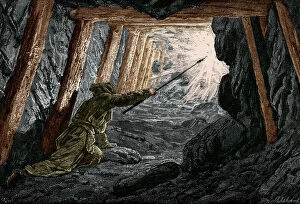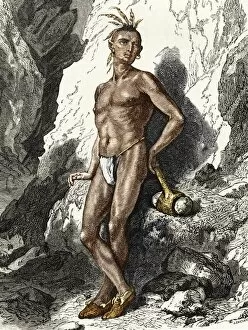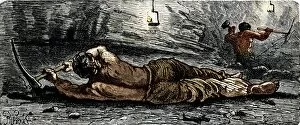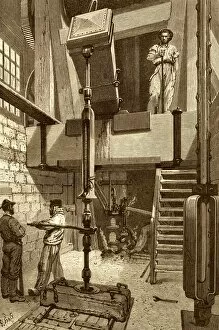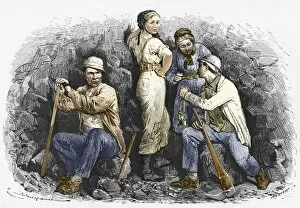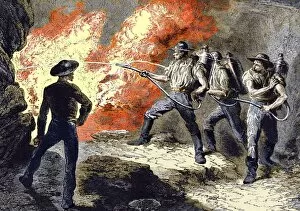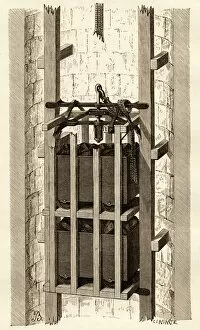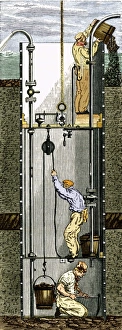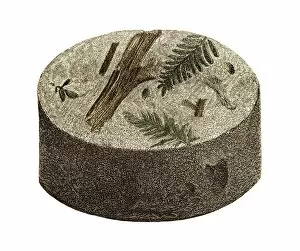Mines And Miners Collection
In the 19th century, Cornwall's tin mines were a testament to human resilience and determination
All Professionally Made to Order for Quick Shipping
In the 19th century, Cornwall's tin mines were a testament to human resilience and determination. Miners toiled deep underground, their faces smeared with coal dust as they extracted this precious metal from the earth. Meanwhile, on the other side of the world in Australia, gold mining fever gripped the nation. Prospectors flocked to remote regions in search of fortune, braving treacherous conditions and battling against nature's whims. The advancement of technology brought about a revolution in mining practices during this era. The introduction of powerful machines transformed laborious tasks into more efficient processes. Yet progress came at a cost; devastating mining disasters claimed countless lives as tunnels collapsed or gas explosions erupted. Amidst these tales of hardship and tragedy, stories also emerged that shed light on forgotten heroes such as Native American mine workers who played an integral role in shaping America's mining industry. Their invaluable contributions often went unrecognized but are now being acknowledged. California became synonymous with gold rush fever during this time period when dreams were made or shattered within its golden soil. Men from all walks of life descended upon its rugged terrain armed with nothing but hope and determination. Holing at a coalface was another arduous task faced by miners across continents – digging relentlessly through layers upon layers until reaching their desired mineral deposits. Boring holes became an art form as skilled workers meticulously carved pathways for extraction while ensuring safety measures were adhered to protect themselves from potential hazards lurking beneath. Step mining techniques practiced in Prussia showcased innovative methods employed by miners to extract minerals efficiently while minimizing risks associated with collapsing tunnels or cave-ins. Throughout these endeavors, heavy metal minerals stood tall among sought-after treasures due to their immense value and diverse applications across industries ranging from construction to manufacturing. As we reflect on the trials endured by miners throughout history, it is essential not only to remember their sacrifices but also recognize how they shaped our modern world through sheer perseverance and unwavering dedication to their craft.



